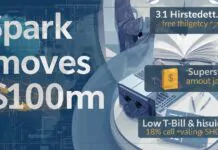LONDON, Oct. 24, 2025 — Zepz, the parent company of WorldRemit and Sendwave, has announced the launch of its new Sendwave Wallet, a crypto-enabled remittance platform built on the Solana blockchain and powered by USDC stablecoin.
The move marks Zepz’s entry into the digital asset space, introducing blockchain-based financial services to its network of more than 100 countries.
A Stablecoin-Powered Wallet for Global Users
According to Zepz’s press release, the Sendwave Wallet will allow users to send, store, and spend USDC on Solana — providing a peer-to-peer money solution that combines the speed of blockchain with the trust and familiarity of Zepz’s established remittance brands.
By using Solana’s high-speed, low-cost infrastructure, Sendwave Wallet aims to make international payments as simple as sending a message, while offering a secure and cost-efficient alternative to traditional remittance channels.
The wallet’s design prioritizes everyday usability, letting customers hold digital dollars (USDC) and send them instantly across borders. Withdrawals to local fiat currencies will be supported through regional partners, while future updates will add payment cards and QR code functionality for in-person purchases.
Partnership with Circle Anchors USDC Adoption
The launch builds on Zepz’s strategic partnership with Circle, the issuer of USDC, first announced in July 2025. The collaboration was designed to integrate stablecoin-based settlement and liquidity management into Zepz’s backend operations.
“By making USDC central to the Sendwave Wallet, customers gain a secure way to hold value, send near-instantly, and spend with confidence in their daily lives,” said Kash Razzaghi, Chief Commercial Officer at Circle.
“This is about putting the benefits of trusted digital dollars directly into the hands of communities — helping them plan, save, and build financial resilience.”
Solana’s Growing Role in Remittance and Payments
Zepz’s decision to build on Solana reflects the blockchain’s growing role as a leading platform for stablecoin-based payments. Solana has seen a surge in stablecoin supply throughout 2025, with on-chain balances surpassing $17.48 billion, supported by its fast transaction speeds and ultra-low fees.
“Zepz’s vision to make global transfers defined by unparalleled speed, security, and affordability can uniquely take place on Solana,” said Lily Liu, President of the Solana Foundation.
She added that the partnership “demonstrates how open blockchain networks can bring financial empowerment to billions of people globally.”
Empowering Remittance Users Worldwide
Zepz, which processes over $15 billion in annual remittance volume, is positioning the Sendwave Wallet as a bridge between traditional finance and the digital economy, particularly for users in emerging markets who rely heavily on cross-border money transfers.
The platform’s peer-to-peer model removes the need for intermediaries, offering faster settlements and lower costs — key pain points in the $800 billion global remittance industry.
With USDC acting as the digital settlement layer, users can send funds globally in seconds, and local partners can facilitate on- and off-ramping between USDC and local currencies. The system is designed to comply with international financial standards and emerging stablecoin regulations under U.S. and global frameworks.
Next Steps: Cards, QR Payments, and On-Chain Settlement
Zepz said the wallet’s roadmap includes rolling out payment cards linked directly to user balances, allowing in-store and online purchases using USDC.
The company also plans to introduce QR-based payments, enabling local merchants to accept stablecoin payments instantly.
In addition, Zepz is exploring integration with WorldRemit’s existing platform, allowing users to choose between traditional bank transfers and blockchain-based transactions depending on speed and cost preferences.
A Growing Trend: Remittances Meet DeFi
Zepz’s foray into blockchain-based remittances mirrors a larger trend of stablecoin adoption in global payments. Major players such as MoneyGram, Western Union, and Visa have all launched or piloted USDC-based settlement programs in recent months.
With regulators across multiple jurisdictions moving to establish clearer frameworks for stablecoins, the use of digital dollars like USDC in cross-border commerce has accelerated rapidly, particularly in Africa, Southeast Asia, and Latin America — regions that Sendwave already serves.
Industry experts see this as a natural evolution: blending traditional remittance infrastructure with decentralized finance (DeFi) technology to deliver faster, cheaper, and more transparent financial access.
Outlook
With Sendwave Wallet live on Solana and USDC at its core, Zepz appears poised to expand beyond its roots as a remittance company and into a broader role as a global digital finance provider.
By leveraging blockchain rails, the company can drastically reduce transaction costs while enhancing transparency and speed — a combination that could redefine how families and businesses move money across borders.
If its rollout succeeds, Zepz could emerge as a case study for how stablecoins and next-gen blockchain networks can modernize remittances for the billions who rely on them daily.







